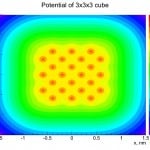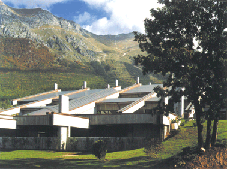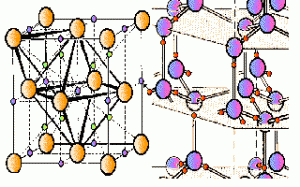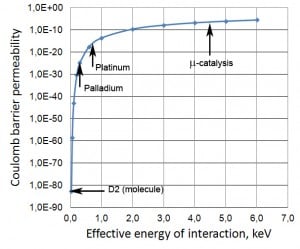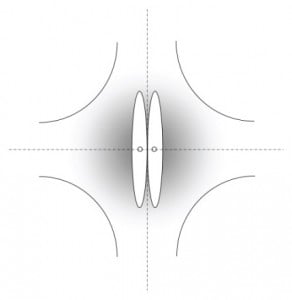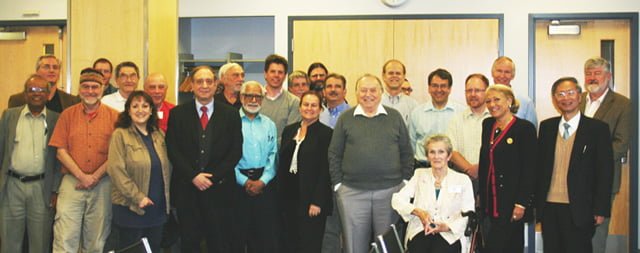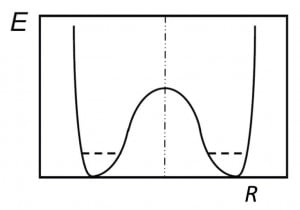by: Kelley Trezise a.k.a Zedshort
Editor’s note: This update focuses on a new development in hot fusion, which uses plasma and high-energy in an attempt to generate electricity directly. While this does not describe cold fusion, we provide this as a service to our readers.
Dense Plasma Focus Fusion (DPF) is an aneutronic fusion scheme that may soon be capable of net power production. The beauty of the method is that it produces no neutrons and may offer a very clean, inexpensive and safe path to abundant energy. DPF offers a direct conversion to electricity method that would bypass the conventional steam turbine cycle creating great capital savings and offering a very compact power production unit. The proposed method would work by the fusion of one proton with one boron-11 nucleus. The resulting highly energetic carbon-12 product then fissions into three alpha particles, yielding net energy out. No gamma rays are produced by this process.
P + 11B → 12C → 3(4He) + 8.9 MeV
The writeup that follows mostly derives from information posted by Lawrenceville Plasma Physics Laboratory (LPP) located in Middlesex, New Jersey, as they have been very open about their progress and generously post a great deal of information about their work. Their web site may be found here: http://lawrencevilleplasmaphysics.com/. In addition, more information about aneutronic fusion can be found at: http://focusfusion.org/. The process is described by Dr. Eric Lerner the president and chief scientist of LPP at a 2007 Google TechTalk found here.
In the next video you will discover that Dr. Lerner is associated with Dr. Miley who was the Chairman of the Nuclear Engineering Department of University of Illinois, Champagne-Urban, with whom he worked on an early version of the DPF machine and theory in 1994. You will hear that at 6:38 in this video. In an e-mail communication with Dr. Lerner I asked the following: “I understand you are associated with Dr Miley of University of Illinois Champagne-Urban who is conducting experiments in the field of ‘Cold Fusion.’ Do you have any insights into those experiments, their results, and advice to those who would investigate the phenomena?”
He responded:
“I wish I had time to look more into this, but I have not. Dr. Miley is a first-rate scientist and if he thinks this phenomenon is worth looking at it, it probably is. It is certainly far from making useful amounts of energy and we are far from understanding it.”
The term dense plasma focus originates from the resolution of a controversy concerning the origin of the fusion products that had been observed in early experiments. Researchers were aware that in the discharge of very large currents, neutrons were produced suggesting fusion was occurring somewhere in the plasma created by the arc of current. Initially they were uncertain as to whether the fusion occurred within small, dense areas or in the more diffuse volume of the current arc. Recent experiments, backed up by photos of the process, led to the conclusion, that the fusion occurs within small knots of current which suggested that the process might be optimized and scaled up. At present, at LPP in their Focus Fusion-One, FoFu-1 or FF-1 machine, a pulse of 2.0 mega amps at 40,000 volts is discharged from a bank of capacitors and into a cylindrical array of eighteen cathode rods. From there, by arching into the single anode placed centrally to the cathodes it creates a plasma within the reaction chamber. The diluted deuterium gas contained within the reaction chamber is pressurized, at present to 40 Torr (0.053 atmosphere). A video illustrating the rundown and plasmoid formation may be found here.
The process is described by Dr. Lerner:
“The filamentary current sheath, driven by the interaction of its own currents and magnetic field, travels down to the end of the inner hollow electrode, where the filaments converge into a single central pinch region, further concentrating both plasma and magnetic fields. A third instability then kinks the single central filament like an over-twisted phone cord, forming a plasmoid, an extremely dense, magnetically self-confined ball of plasma only tens or hundreds of microns across. By this time, the density and magnetic fields of the plasma in this small region are much larger than those present at the start of the process, and a substantial fraction of the energy fed into the device is contained in the plasmoid. A fourth instability causes the magnetic fields at the center of the plasmoid to decrease, and these changing magnetic fields induce an electric field, which generates a beam of electrons in one direction and a beam of ions in the other. The electron beam heats the plasmoid electrons which in turn heat the ions, thus igniting fusion reactions. The energy is released in the ion and electron beams and in a burst of X-ray energy from the heated electrons in the plasmoid.”
Proton-boron fusion begins at 1.5 billion celsius (123 keV). LPP has reported temperatures of 1.8 billion-degree celsius (150 keV, as of March 2012). These toroidal shaped plasmoids have a radius of 300-500 micron with magnetic fields in the range of 400 mega-gauss. The goal is 8 to 12 giga-gauss fields. The density of the entrapped gases increases to almost that of a solid and as a result, a very large fraction of the cyclotron radiation is captured by the fusible material. The arc formation and plasmoid collapse take place in 2 microseconds. Celsius temperatures are often quoted, rather than kelvin, but the difference is only 273 degrees and compared to the billion-degrees quoted, relatively speaking the difference is nil. While LPP has officially claimed 1.8 billion-degree celsius, they have evidence of temperature up to 4 billion-degrees, which claim can be found here.
The experimental apparatus operated by LPP is a single pulse machine that may be cycled several times per hour. At present they are fusing deuterium gas in order to measure the energy evolved within the ball of plasma by measuring the speed and number of the emitted neutrons. Later this year, LPP hopes to make the first shots with proton-boron fusion using a 2.3 mega-amp pulse at 45 keV. A video of a single shot of the apparatus may be viewed here. High speed video of the plasma formation within the reactor chamber can be seen a 1:10 here.
One of the beauties of aneutronic fusion is that it produces almost none of the very damaging neutron radiation common to most fission and fusion schemes, although there are side reactions with DPF that would produce short lived radioactive species and very rare and weak neutrons. The absorption of neutrons by nuclei may render them radioactive, and the passage of such radiation through the matrix of materials may alter it structurally. One unfortunate byproduct of neutron radiation is embrittlement of metals. Neutrons, of course, also damage living tissue. The very scheme of tokamak fusion might be rendered economically unviable unless the damage to the reactor can be mitigated. In addition, if a large part of the fusion energy is in the form of neutrons, those must be captured and the resulting heat conducted away in order to convert their energy to electricity. Worse still, almost all neutron production methods threaten to become a path to atomic weapon proliferation as the neutrons can be used to breed tritium, a fusible material used to boost fission weapons into fusion weapon status. Hence neutronic fission and fusion schemes of power generation are destabilizing. Aneutronic fusion suffers from none of those weaknesses.
In the final production form, a DPF reactor using proton-boron fusion might be cycled 200 times per second to produce a power output of 5 mega-watt electric to the grid. The electrodes would be made of beryllium as that material is transparent to the copious X-rays produced, and less erodible at the reactor operating temperatures and pressures. The X-rays produced (about 40% of the energy evolved in the reactor during a cycle) would be absorbed by the photo-electric effect in many layers of aluminum foil that would surround the reaction chamber in an onion shell configuration. The diameter of the onion shell with the enclosed reactor might be one meter, attesting to its diminutive size. One of the unique and very useful features of the device is that when the cage of plasma collapses, a flux of electrons stream into the central anode, while a beam of alpha nuclei stream out in the opposite direction; this equal and opposite flow of opposite charges constitutes a current. The energy associated with the stream of positive ions can be easily captured in a transformer coil. The electrons streaming out of the plasmoid in the opposite direction would be captured by the anode. An animation of a concept of a power production unit showing the “onion shell,” transformer coil, and capacitor banks may be found here.
The energy of the alpha particles can be easily captured by a transformer coil and the electrons captured by the anode, while the onion shell captures the X-rays. The three outputs provide the gross energy out, a part of which is considered net output that is sent to the grid. The efficiency of this beam and X-ray capture scheme would be 80% or more (this does not constitute the overall efficiency of the system). As there is no need for a steam cycle, the great cost of that capital equipment (which is about half the cost of a nuclear fission power plant) is saved.
A Sankey diagram for a proposed 5 MW electric output DPF machine can be found here. It illustrates the energy flow in the system for a single pulse from the capacitor bank charged to 100 kJ to produce an assumed fusion energy pulse of an assumed 66 kJ (equal to the amount from the capacitors), the delivery to the grid of 24.7 kJ and total losses to be dissipated (or used otherwise for space heating) of 42 kJ. The efficiency of the process would be calculated to be 24.7/(24.7+42) X 100% = 37 %. One hundred kilo-joules is enough energy to light a 100 watt bulb for 16 minutes and 40 seconds. The fusion energy gain factor, Q, of the system is the ratio of the energy created within the system to the energy required to maintain the operation of the system. In the example given the energy created is 66 kJ and the losses are 42 kJ. Hence the Q = 66/42 = 1.57.
The X-rays produced by this method are both a problem and a promise. Initially it was believed that as the cage of current crushed and heated the plasma, the loss of too much energy via X-rays, would limit the heating of the contained plasma. A phenomena named the Magnetic Field Effect appears to limit those losses. Dr. Lerner talks about the effect at starting at 29:30 here.
Ideally, it is the ions whose energy must be increased, not the electrons. That increase comes about when a faster electron collides with a ion and boosts its speed by a small amount. The reverse can occur, causing energy to be lost from the ions but it is more rare as the ions tend to move more slowly than the electrons. There is however some overlap in the speed distributions of the two species. As the electrons move along the lines of the magnetic field, they must take a helical path (caused by the Lorentz force) and so orbit the magnetic field lines. There is a limit to the energy that an ion can impart to an electron due to the fact that in very intense magnetic fields (Giga-gauss range) the electrons are limited to only certain orbits about the magnetic field lines due to the fact that energy is quantized. In a sense an electron with the wrong energy (incorrect wavelength), cannot physically fit the orbital path it must take as it spirals along the magnetic field line, and so it cannot exist in that state. Hence if the electron is to increase in speed, the colliding ion must impart the precise amount of energy or else the impartation of energy does not happen, the electron is not accelerated and the ion is not slowed. The reverse is not true as the ions are much more massive and slow and are able to take up virtually all the energy from impacting electrons in any quanta they can offer. In effect, in this situation quantum effect shows up for the electrons but not the ions. You might imagine there is a one-way valve that allows only a net flow of energy from the swarm of electrons into the swarm of nuclei.
As a result, the less massive electrons would be cooler (of lower energy) than the more massive ions and energy losses by radiation from the electrons would be reduced to frequencies that can be trapped in the very dense plasmoid. This has been verified by experimental evidence. When boron-11 is used with magnetic fields of 2.6 Giga-gauss, the ions would have to be at 600 keV in order for them to lose substantial energy to the electrons, while the electrons would be at higher speeds but with energies 20 times lower, (due to their very much lower mass than the ions). Thus the X-radiation from the plasmoid is reduced by a factor of four. It should be pointed out that the radiation is emitted by electrons only during the heating process. Bremsstrahlung radiation that results from the deceleration of electrons by collisions would produce much of the X-rays that would be captured by the onion shell. The Magnetic Field Effect is discussed here.
Very subtle effects can have magnified consequences as is attested to by the recent application of an axial magnetic field within the reaction chamber. It was previously noted by one of the LPP researchers that the plasmoids had some amount of angular momentum and in fact that momentum is essential to their formation. It was concluded that the momentum originated with the component of earth’s own magnetic field along the reaction chamber’s axis. The thought naturally occurred to enhance the effect by the intentional induction of an axial magnetic field and so further increase the plasmoid’s angular momentum. The end result was to boost the fusion product by a factor of two and the X-rays by a factor of 15. LPP likens the result to the “butterfly effect,” as a small current was used to control a much larger current, that in turn induced an increase in output. LPP now has a patent on the application of such a field. There is unfortunately an upper limit to the effect as too much momentum would result in losses. The axial magnetic field application and its results are described here.
While the loss of energy from a power production device in the form of X-rays is a curse, the copious X-rays produced suggest an alternate path to economic success for the company in the form of X-ray inspection or lithography. This alternate commercial path for LPP is discussed here.
LPP goals in 2012 can be found here: http://focusfusion.org/assets/lppx/LPPX_2012_01_31.pdf
As LPP has posted, “Looking forward, we expect in the coming year to achieve the following major goals:
1) Demonstrating the theoretically predicted fusion yield with pure deuterium.
2) Showing higher fusion yield with heavier gas mixtures.
3) Achieving reliable performance at still higher fill pressures.
4) Boosting yield even further with shorter electrodes, which allow higher gas densities.
5) Achieving giga-gauss magnetic fields in the plasmoids.
6) Demonstrating the quantum magnetic field effect’s reduction in X-ray cooling
7) Demonstrating scientific feasibility with pB11 fuel.”
What is not apparent in the above list is the long struggle LPP has had with unreliable equipment, misalignment of their reactor components, mechanical damage, and last but not least a lack of funding. Despite that, they have made progress and I personally believe they will be the first to achieve breakeven. The goal, however, is not breakeven but to produce power out at a level high enough to make the venture an economic success. LPP’s method of hot fusion requires higher temperatures but the economic goal actually lies closer for them than that for tokamak power schemes due to DPF greater simplicity and the efficiency afforded by direct conversion of the power to electrical power.
This scheme of electrical production is conducive to producing a very compact and transportable energy source. A five megawatt electrical generation device might be enclosed and moved about in a semi-trailer and located virtually anywhere as the fuel could be contained within very small pressure tanks of decaborane and ordinary hydrogen and could run for years before the reactor electrodes would be replaced. Such a generator would however require the dissipation of 8.5 MW of waste heat. While there is a need to dissipate the energy not delivered to the grid, that cost would be relatively small compared to the cost of the steam cycle capital equipment that is not needed with this method of power generation. The cost of mass produced devices is estimated to be $300,000 and able to produce electricity at a cost of 0.2 cents/kWh for an installed cost of $60/kW verses the present average of 12 cents/kWh and $1000/kW installed cost for conventional power generation. In other words the initial installation cost of a DPF would be only 6% and the long term cost a bit more than 1.6% (0.2/12) of conventional reactors. Estimates for fission plants are running up to around 25 cents/kWh and $4000/kW installed making the choice between the two fusion paths very obvious. The installation cost of a futuristic tokamak power fusion reactor, expected to be online sometime near the end of the 21st century, is estimated to require the full faith and credit of the United States to fund and without a major breakthrough in materials durability, its lifetime as brief as a mayfly compared to any other forms of power production.
DPF reactors might be located closer to their point of use, and so the cost of the massive transmission lines and transformers would be eliminated. Looking into the future, such devices might power aircraft and by doing so eliminate the fuel which is as much as 40% of take-off weight. Spaceflight would be a bit more problematic as there would be no atmosphere to which the waste heat might be dissipated. Its dissipation would require a system of radiators, however, the specific impulse of such a propulsion plant would be astronomical.
What has LPP achieved and how far do they have to go and how does this compare with tokamak confined hot fusion, their progress and their goalpost positions? The three technical goals that must be achieved with any hot fusion scheme are sufficient energies (temperature), confinement time, and density. With respect to DPF, the first two of those three have been achieved. The experimental results suggests that the process scales as the fifth power of the current ( I^5 ) or more precisely…neutron yield = 123 x I^ 4.674. Again it should be explained that at the present time LPP is using deuterium (D-D) as a fuel to allow measurements of process within the plasmoids. The yield of 150 billion neutrons (October 10, 2011) with recent shots, suggests the scaling law is accurate. The output scales as the square of the density of the reactants. At present the gas densities have been kept low but will be increased. The use of proton-boron fuel will also boost the plasmoid density. Shots with higher gas densities will be made with the use of additional capacitors and higher voltages in an effort to get the plasma density up. The confinement time has long been sufficient.
The Lawson criteria, in the form of the triple product of the three parameters, temperature, confinement time and density, provides a rough measure of progress and affords a comparison with other hot fusion schemes. For the DPF the required product is for break-even with proton-boron fusion is 2.5 x 10^21 keV-s/cm3 while they have achieved 4.8 x 10^18 keV-s/cm3 (October 2009) using a He, N, diluted D-D fuel. The results would rise with the higher density proton-boron fuel and higher amperage. For a tokamak a machine that fuses deuterium and tritium (D-T) in a 50-50 mixture, the Lawson triple product is 6 x 10^15 keV-s/cm3 for break-even. The goal, however, is not just to break-even but to produce a power generator that is economically viable. Hence, the goal for DPF is only ten times above breakeven whereas it might be higher for the tokamak by a factor of 20 or more as the tokamak requires a very expensive steam cycle power plant, its capital expense would be large and its service life might be very short. DPF uses a direct conversion to electricity method and does not use the steam cycle to generate electricity hence it would be cheaper. Even in terms of the product of temperature, confinement time and density the DPF is ahead of the Princeton tokamak TFTR by an order of magnitude.
Lack of funding, from government sources, is mostly due to the decision to fund only two methods of fusion research: tokamak and inertial confinement. Initially the research on DPF was funded by NASA’s Jet Propulsion Laboratory with $300,000, under the guise of a space propulsion method but there was made an administrative decision that all fusion research of all sorts including that related to plasma research must be applied as directly as possible to enhance the the two preferred methods of tokamak and inertial confinement fusion. As a result, the program supporting Dense Plasma Focus was cut. Since that time LPP has raised over $2 million by private placements of company stock in an effort to raise capital. The Abell Foundation has also, generously, donated money to the cause. In the 2007 Google TechTalk, Lerner suggested that the construction of a 3 mega amp DPF able to surpass breakeven would take three years to construct and might cost $2 million. Beyond that another three years would be needed to create a prototype design. It is going on five years since that presentation. It is a puzzle as to why this promising method of producing power has been overlooked by the venture capitalists. The unfortunate fact seems to be, that we have a horizon of at most three years, which in the larger scheme of things is nothing. Given the potentially gigantic payback that DPF offers, such a perspective seems less than foolish.
In spite of the very low level of funding, progress produced by LPP’s machine, has yielded vastly greater results than has the tokamak. Tokamak funding over the past 25 years has been $300 million per year; whereas, the funding of LPP’s project over seven years was a comparatively miniscule $3 million but when results are placed on the basis of funding that produced those results, the return seems vastly better from DPF. There are about a dozen other DPF endeavors around the world.
The foolish insistence that governments have, of putting all their eggs in one basket too often results in the squandering of opportunities. The error originates with the mistaken belief that a few decision makers (bureaucrats) can see into the future is wrongheaded. The United States alone, has spent almost 40 billion dollars since the late ’60s on tokamaks, inertial confinement and plasma physics. While it might be said that the research into plasmas has not been entirely lost, much of the balance seems at this late date to be little more than an attempt to avoid the embarrassment of admitting to a loss and walking away from a bad investment. Unfortunately, when a single idea is supported at the expense of all others it may develop a strangle hold not only on the funding of scientific research to the degree that other productive ideas are stillborn, but may also capture a great many people into a bureaucracy that is unwilling or incapable of changing tact. The new path to power fusion might lie with Dense Plasma Focus.
Too many scientists today are hardly different from the Cardinals to whom Galileo sent an invitation to peer through his telescope at the Moons of Jupiter. If closed and blinkered minds can strangle a very promising scheme such as Dense Plasma Focus Fusion that cleaves to the path of hot fusion, then what chance would we who support alternate forms of energy production have of ever convincing such people to dare to touch the third-rail of scientific research we know as Cold Fusion?
If the impasse in energy production is not broken this year or early the next (2013) with a LENR product, then it suggests that something of a more revolutionary and disruptive sort must be initiated at a grass-roots level. While we may loath the idea of disrupting what many still believe to be the last repository of rational and non-political thinking in our society, the idea that the advance of science is a product purely of rational thought and behavior is misguided. Our perception of scientists and the scientific establishment as rational, gentlemanly, altruistic, honest, free and clear of the baser instincts that we groundlings possess is totally wrongheaded.
The unfortunate truth is that scientists too often display an irrational refusal to look at the very foundation of science, i.e. scientific data. Instead, what many resort to is the trumpeting of well tested truths in a manner that smacks of genuflection. In a sense they are correct to ignore LENR evidence. Their refusal to entertain a discussion of the subject or to allow funding of LENR investigations is as well founded as was the behavior of the Cardinals that refused to look through Galileo’s telescope; to look would have result in their being cast out of the church hierarchy; I apologize, I meant science hierarchy. What could be worse than to be ostracized?
It has been said many times in the past, “Fusion is the energy source of the future, ” often with the caveat, “and it always will be.” There many come a day, hopefully soon, when the underfunded upstart known as Lawrenceville Plasma Physics Laboratory achieves breakeven with their Dense Plasma Focus machine and usurps the future. If I could somehow, pit the Goliath of Tokamak against the David of DPF, I would put my money on the latter. But, the meantime and until the breakthrough comes, you and I and everyone else will have to continue to suffer the indignity of having a small cadre of well entrenched scientists, whom have come to believe that their long, hard and painful suckling at the public teat is their patrimony.



